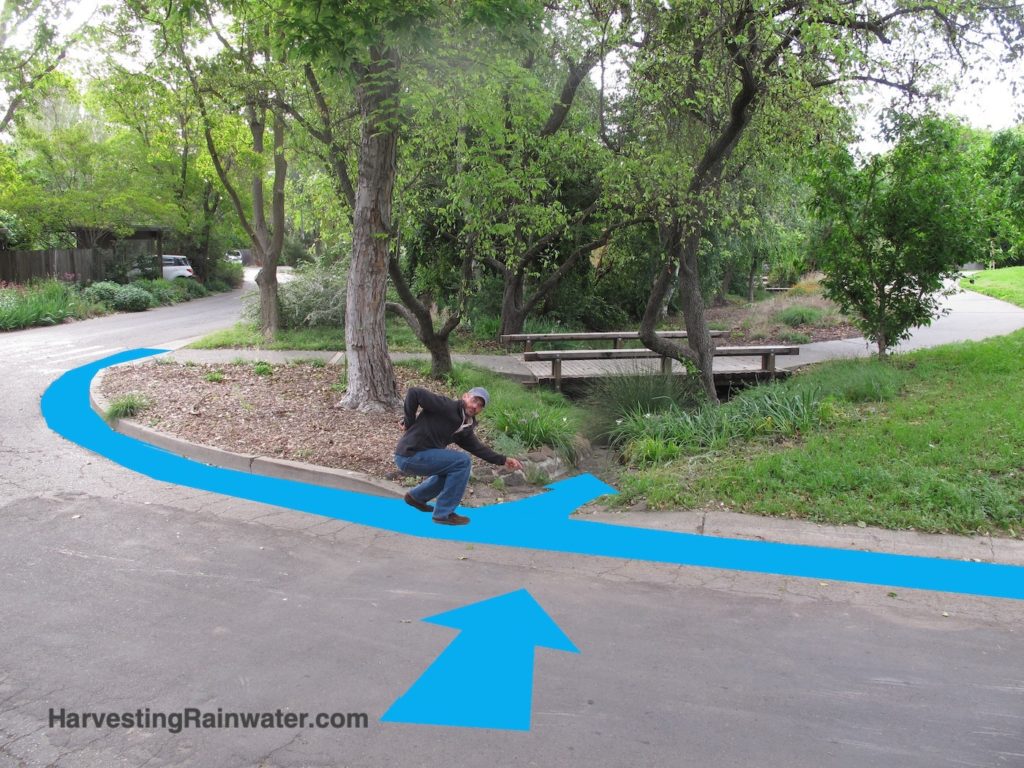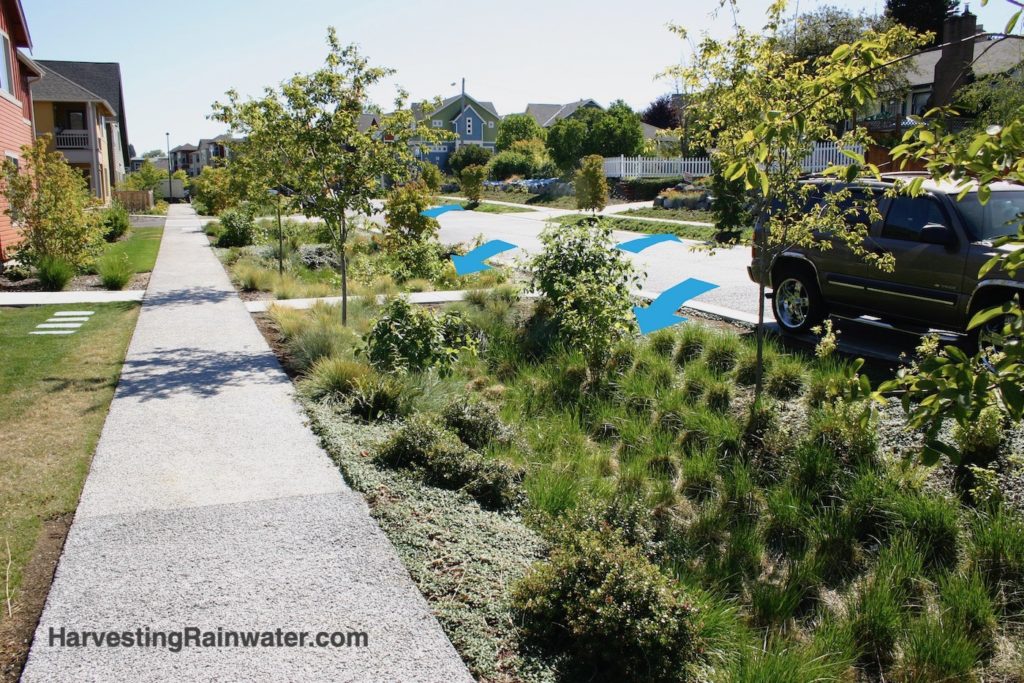Stormwater & Street Runoff Harvesting
Stormwater is rainwater once it has landed on a ground surface. Often in a good rain there is more stormwater than a surface can infiltrate, so much of the stormwater runs off the surface—creating runoff that often erosively carries away beneficial organic matter and topsoil with it, or contaminants from polluted sites.
Stormwater harvesting turns runoff into soakin. Instead of draining the stormwater off site, we infiltrate it on site. It is also sometimes called rain gardens, green infrastructure, and/or water sensitive urban design

Photo: Brad Lancaster
Street runoff harvesting is a version of stormwater harvesting that takes advantage of the high volume of runoff that drains off paved and/or compacted surfaces of streets, dirt roads, driveways, and parking lots. Many of these concepts can also be applied to harvesting runoff from sidewalks, footpaths, and livestock trails.

Photo: Brad Lancaster
In Tucson, Arizona where rainfall averages 11 inches (280 mm) per year, over one million gallons of stormwater runs off a typical one mile stretch of residential neighborhood street per year (or 3 million liters of stormwater per kilometer per year).
If that stormwater were directed to street-side plantings, rather than the storm drain, there would be enough water to freely irrigate over 400 native, food-bearing shade trees per mile (1.6 km). Or one tree every 25 feet (7.5 m) on both sides of the street. And all of this would dramatically reduce downstream flooding along with the cost/need of underground storm drains.
Do you see the potential here?
Every street, walkway, and parking lot could be continuously canopied/sheltered with living shade irrigated with nothing more than the harvested stormwater running off the pavement. Street trees irrigated by the street.
This works just as well in wetter and drier climates. The basic strategies remain the same, but what changes is the plant palette used. You use plants best adapted to your site’s climate, microclimate, soils, and wildlife. These are typically plants native or indigenous to your area and microclimate. Though sometimes it may make sense to use plants from a climate analog—a similar climate/microclimate and soils to yours, but which may be as far away as the other side of the globe.
For more:
See the new, full-color, revised editions of Brad’s award-winning books
– available a deep discount, direct from Brad:


Volume 2
See Rainwater Harvesting for Drylands and Beyond, Volume 2, 2nd Edition for myriad stormwater- and street-runoff-harvesting strategies and examples along with step-by-step how-to installation guides.
